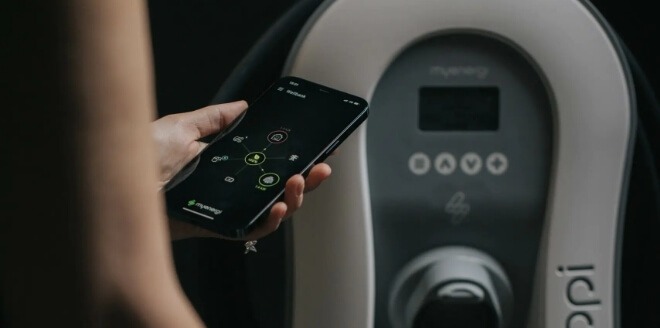There are almost daily media reports about electric driving these days. The mobility transition to zero-emission vehicles is unstoppable. More and more it is becoming clear that in the near future the choice to switch to a fossil-free mobility solution will have to be made. Governments incentivize with rebates and tax breaks, urban governments are taking measures to improve air quality, and the auto industry is also investing heavily to be ready to meet (unstoppable) demand within a few years.
Electric driving is the future, or rather, as soon as it fits within the budget, a sensible choice. Because let's face it, for many people an electric car is still too big an investment. However, the second-hand market is growing steadily, and it is already clear that the residual value is high due to the increasing demand. An eye-opener for those who are still considering buying a fuel-powered car: the demand for petrol and diesel vehicles will drop significantly within five years as environmental zones restrict the movement of these CO2-intensive cars.

Difference from traditional cars
Once the choice for an electric vehicle has been made, there are of course some differences in the approach to drive it. Driving electrically is quite different from driving a petrol or diesel car. It may seem obvious, but the biggest difference with traditional cars is that electric cars do not emit CO2. No fossil fuels are used and there are no polluting emissions. This is, of course, an important advantage for people who want to reduce their carbon footprint. However, it is important to consider the type of electricity you use to charge the car. The greener the electricity, the more environmentally friendly the car is.

How can you charge an electric car?
There are roughly 3 ways to charge your car: fast charging, public charging and home charging.
Fast charging
The first method is mainly used during longer car journeys when the battery capacity is not sufficient to reach the goal. High-performance recharging can be carried out very quickly; usually between 20 and 30 minutes is sufficient to be able to continue the journey. You cannot influence the current used for this purpose.
Public loading
The same applies to public charging, for people who cannot charge at home or if you park somewhere for a long time. Here, too, you cannot decide which electricity you charge in the vehicle. Of course, as the energy mix becomes greener, this power will also be produced more sustainably and the impact on the environment will be less and less.

Home charging
The third option for charging when driving electric is home charging. You can decide how the electrons for your car are generated. In fact, you can choose green contracts through your power supplier that assure you of clean power. However, at the time of purchase, this power could still be gray, but it will have to be offset at a later time.
However, if you generate your own energy, with solar panels or a wind turbine, it should be possible to trace that green power directly to your vehicle. And that, indeed, is exactly what the following product has already come to market with through innovative techniques in 2017. The myenergi zappi charging stations namely offer that possibility by taking the solar surplus into account when charging. Here, no more power is taken from the general power grid. It is purely the own generation which, if available, is charged into the vehicle. And this then guarantees that you can drive completely green, without coal power.

How do I choose a home charger?
There are many home chargers on the market, each brand trying to get its share of the fast-growing market. And each brand and type has its own unique feature, it is quite a challenge to choose the right one. Important features that a smart charging station must possess are obvious, the device must be able to safely and quickly charge the vehicle.
The myenergi zappi has smart technology that protects your home's main fuse. Even if you want to be able to charge the vehicle while cooking or when the washing machine, kettle, or your heat pump is turned on. The power of the charging station is automatically down regulated when necessary to avoid overloading your home system.
At the same time, you can set the device to take into account the upcoming capacity tariff. This keeps you able to purchase power at the most advantageous rate, while maximizing green and fast charging for your car. In this way, the impact of electric driving will be reduced to a minimum, the power grid will be less burdened, your electricity bill will be more advantageous and the environment will certainly be helped as well. We all bear a responsibility where making the right choices is decisive for achieving the climate goals.

 EV charging
EV charging Manage your energy
Manage your energy Maximize your energy
Maximize your energy Monitor your energy
Monitor your energy Find an installer
Find an installer Business charging station
Business charging station Pair zappi with a management platform
Pair zappi with a management platform





